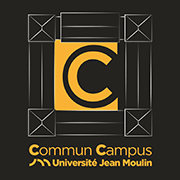AccueilRechercheProgrammes et productions scientifiquesThèsesThèses soutenuesThèses soutenues - 2023
-
Partager cette page
- Recherche,
- Philosophie,
LE L?DAN Sophie, Claire
Le r?le de "l'ascenseur stratégique" dans l'amélioration des processus de décision et de la performance globale à l'h?pital
Thèse en Science de Gestion, soutenue le 4 octobre 2023.
? partir d'une recherche-intervention qualimétrique conduite pendant deux ans dans une clinique de soins de suite et de réadaptation, cette thèse vise à étudier l'intégration des informations dans les processus de décision. La problématique porte sur la manière de mettre en place un ascenseur stratégique, c'est-à-dire à organiser de manière permanente la circulation d'informations entre les niveaux horizontaux et entre les différents services verticaux de l'organisation hospitalière, dans le but d'améliorer les prises de décisions et leur mise en ?uvre. Nous confrontons nos résultats de terrain à la théorie socio-économique et à l'approche par les ressources.
Selon notre analyse des résultats, nous constatons des lacunes dans l'articulation entre les décisions stratégiques et les actions opérationnelles au niveau macro de l'organisation hospitalière. Au niveau méso, nous observons fréquemment des problèmes de communication entre les différents services d'un même niveau, ainsi qu'entre les acteurs au sein d'un même service. Nous constatons des défaillances régulières à toutes les étapes du processus de décision, ce qui crée des obstacles à la mise en ?uvre effective et des co?ts cachés qui dégradent la performance de l'établissement. Ces obstacles peuvent être considérés comme des pannes de l'ascenseur stratégique.
La nature systémique de l'organisation n'est pas prise en compte dans les décisions, y compris au niveau stratégique. Les adaptations nécessaires et les moyens requis pour la mise en ?uvre des décisions stratégiques ne sont pas anticipés, et les effets néfastes directs ou indirects ne sont ni anticipés ni recherchés.
Les ressources ne sont pas considérées comme telles, et la possibilité d'activer, de développer et de combiner les ressources entre elles pour accro?tre leur valeur ajoutée est rarement envisagée. Pourtant, le service rendu par les ressources dépend de l'efficacité de la cha?ne de décisions et d'actions tout au long du processus, ce qui fait du processus de décision d'une organisation, une ressource stratégique. Le potentiel humain n'est souvent pas considéré comme une ressource réelle, à l'exception de certaines compétences médicales spécialisées. Les acteurs ne sont pas per?us comme ayant un potentiel, mais souvent comme des obstacles au changement et à la performance de l'organisation. Le manque de management du potentiel humain peut transformer cette ressource à fort potentiel de retour sur investissement en une ressource négative. Les investissements dans le développement qualitatif du potentiel humain sont sous-utilisés.
Nous identifions six causes probables pour expliquer le manque de performance du processus de décision. Nos recommandations managériales portent sur l'organisation de l'établissement, les relations et les fonctions de la gouvernance par rapport à la direction d'un établissement, et les leviers d'action des pouvoirs publics en charge de la santé.
Mots-clés : Processus de décision ; h?pital ; ascenseur stratégique ; informations ; management socio-économique ; analyse conséquentielle qualimétrique ; communication-coordination-concertation ; recherche-intervention ; ressources
The aim of this thesis is to study the integration of information into decision-making processes. This research is based on a qualimetric intervention-research conducted over 2 years in a follow-up care and rehabilitation clinic. The problem concerns how to set up a strategic elevator, i.e. to organize the permanent flow of information between the horizontal levels and between the various vertical departments of the hospital organization, with the aim of improving decision-making and its implementation. We compare our field results with socio-economic theory and the resource-based view.
According to our analysis of the results, there are gaps in the articulation between strategic decisions and operational actions at the macro level of the hospital organization. At the meso level, we frequently observe communication problems between different departments at the same level, as well as between players within the same department. We regularly observe failures at all stages of the decision-making process, creating obstacles to effective implementation and, ultimately, hidden costs that degrade the facility's performance. These obstacles can be seen as breakdowns in the strategic elevator.
The systemic nature of the organization is not considered in decision-making, even at the strategic level. The necessary adaptations and resources required to implement strategic decisions are not anticipated, and direct or indirect adverse effects are neither anticipated nor sought.
Resources are not considered as such, and the possibility of activating, developing, and combining resources to increase their added value is rarely considered. However, the service provided by resources depends on the efficiency of the chain of decisions and actions throughout the process, which makes an organization's decision-making process a strategic resource. Human potential is often not considered a real resource, apart from certain specialized medical skills. People are not seen as having potential, but rather as an obstacle to change and organizational performance. Lack of management of human potential can turn this resource with high ROI potential into a negative resource. Investments in the qualitative development of human potential are under-utilized.
We identify six probable causes of poor decision-making performance. Our managerial recommendations focus on the organization of the facility, the relationships, and functions of governance in relation to the management of a facility, and the levers of action of the public authorities in charge of healthcare.
Keywords: decision processes, hospital, strategic elevator, information, socio-economic approach to management, qualimetric consequential analysis, communication-cooperation-consultation, intervention-research, resources
Directeur de thèse : Véronique ZARDET
Membres du jury :
Mme BERT?Z?NE Sandra, Rapporteure, Professeure, Conservatoire National des Arts et Métiers, Paris, France,
M. NARO Gérald, Rapporteur, Professeur des universités, Université de Montpellier, France,
Mme BEAUP?RE Sophie, Déléguée générale, Unicancer, Paris, France,
M. DETCHESSAHAR Mathieu, Professeur des universités, Université de Nantes, France,
Mme GOTER Fran?oise, Ma?tre de conférence, Université Jean Moulin Lyon 3, France,
Mme RASTROLLO HORILLO, Maria Angeles, Professeure titulaire, Université de Malaga, Espagne.
Président du jury : Mathieu DETCHESSAHAR







